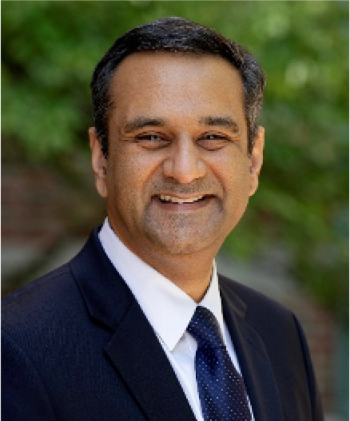
Our annual review of new products for atomic and molecular spectroscopy, including details by category and highlights of overarching trends.


Our annual review of new products for atomic and molecular spectroscopy, including details by category and highlights of overarching trends.

The “fingerprint in the fingerprint” region is key for active pharmaceutical ingredient (API) identity testing. We explain why.

Raman spectra can help determine protein structure. Here’s how.

We explain how to characterize barium fluorohalides with Raman spectroscopy.

Innovative database search technology can help Raman spectroscopists identify molecular vibrations; here, we show how to use these tools more effectively.

In this study, the nitrophenol isomers, in solid and liquid phases, were analyzed using Raman spectroscopy, laying the groundwork for determining nitrophenol isomers in environmental monitoring with this technique.

Zac Schultz of The Ohio State University and his team used tip-enhanced Raman spectroscopy (TERS) and surface-enhanced Raman spectroscopy (SERS) with gold nanostars to investigate chemical reactions involved in protein–ligand binding. He recently spoke with Spectroscopy about his findings.

Bhavya Sharma is the winner of the 2021 Emerging Leader in Molecular Spectroscopy Award. We recently interviewed her about her work conducting research to detect active and important biomolecules related to hormone regulation, neurological health, and disease diagnosis.

Roy Goodacre, a professor of biological chemistry at the University of Liverpool in the United Kingdom, first used SERS to achieve whole-organism fingerprinting of bacteria and then explored SERS in a variety of other applications, including within biotechnology, disease diagnostics, quantitative detection, imaging, food security, and more. Goodacre is the 2021 winner of the Charles Mann Award for Applied Raman Spectroscopy. This interview is part of an ongoing series of interviews with the winners of awards that are presented at the annual SciX conference.

Professor Rohit Bhargava and his team at the University of Illinois, where they have established the Cancer Center at Illinois, are advancing research in tumor microenvironments, using techniques such as high-definition Fourier transform infrared (HD-FT-IR) coupled with machine learning. We recently spoke to Bhargava about this work.

Analytical chemists are continually striving to advance techniques to make it possible to observe and measure matter and processes at smaller and smaller scales. Professor Vartkess Ara Apkarian and his team at the University of California, Irvine have made a significant breakthrough in this quest: They have recorded the Raman spectrum of a single azobenzene thiol molecule. The approach, which breaks common tenets about surface-enhanced Raman scattering/spectroscopy (SERS) and tip-enhanced Raman spectroscopy (TERS), involved imaging an isolated azobenzene thiol molecule on an atomically flat gold surface, then picking it up and recording its Raman spectrum using an electrochemically etched silver tip, in an ultrahigh vacuum cryogenic scanning tunneling microscope. For the resulting paper detailing the effort [1], Apkarian and his associates are the 2021 recipients of the William F. Meggers Award, given annually by the Society for Applied Spectroscopy to the authors of the outstanding paper appearing in the journal Applied Spectroscopy. We spoke to Apkarian about this research, and what being awarded this honor means to him and his team. This interview is part of an ongoing series with the winners of awards that are presented at the annual SciX conference. The award will be presented to Apkarian at this fall’s event, which will be held in person in Providence, Rhode Island, September 28–October 1.

This article discusses how FT-IR and SERS is being used to detect counterfeit pharmaceutical drugs.

Those inexperienced in using FT-IR spectrometers can encounter problems when measuring spectra. This article discusses several main issues that most users experience while using FT-IR spectrometers and how to remedy each problem.

This article discusses coherent Raman imaging and how it can visualize and quantify cutaneous pharmacokinetics (PK).

Working at the frontiers of biotechnology, fiberoptics, lasers technique, and molecular spectroscopy, Tuan Vo-Dinh of Duke University has developed multiple sensor technologies for medical research and diagnostics. Throughout this work, Vo-Dinh and his research colleagues have brought spectroscopy to biomedical applications. In this second recent interview, Vo-Dinh talks about his research work and philosophy.

An increasing number of antibiotic residue problems in food have emerged around the world. We examine how SERS is used to identify antibiotic residues in chicken, focusing on doxycycline hydrochloride and tylosin.

This year’s molecular spectroscopy award recipient is Bhavya Sharma, who is demonstrating research leadership focused on neurochemical detection using SERS and SORS Raman spectroscopy.

Here, we finish a discussion of the spectrum of polyethylene (PE) and explore how different PE syntheses produce materials with different physical and spectroscopic properties.

To better understand Raman spectral profiles, we briefly examine spectral line shapes, while discussing spectral shape, bandwidth, and broadening as percentage of Gaussian and Lorentzian components.

This article explains the key steps of using Raman technology to investigate carbon and carbon-based materials—such as carbon nanotubes, graphene, and carbon fibers and composites—as well as the process of analyzing the spectra.

In SERS experiments, the excitation laser power needs to be kept at a level that enables detection but avoids damaging the sample, as these examples illustrate.

Igor K. Lednev at the University at Albany SUNY in New York explains advances in forensic analysis using a variety of chemometrics techniques to classify ATR FT-IR and Raman spectra of bodily fluids.

Inline FT-NIR and offline terahertz Raman imaging analysis are used to characterize active pharmaceutical ingredient (API) crystallinity and to monitor different solid physical states of the API, to control process parameters of hot melt extrusion.

Using confocal Raman imaging and other advanced measurement techniques, we study the localized strain characteristics of tungsten diselenide (WSe2), an important nanomaterial used for optoelectronic device applications.

Using Raman imaging, wild-type and engineered yeast cells were compared for their ability to produce bioactive compounds. Raman imaging microscopy is able to visualize locales, relative abundance, and production efficiencies of biologically active compounds for the individual yeast cells.